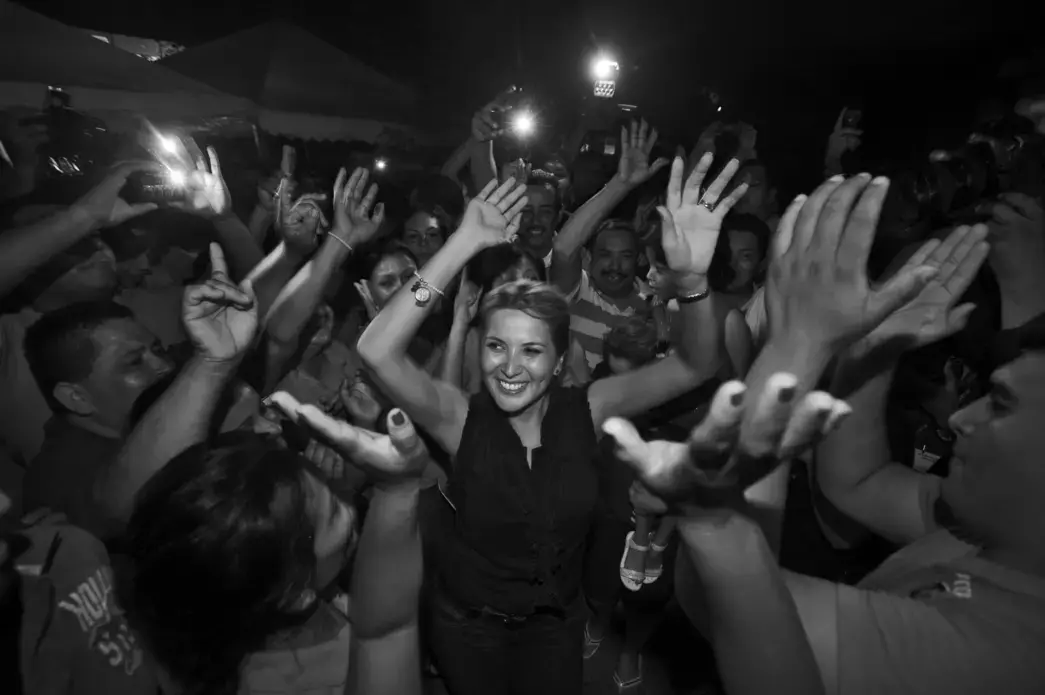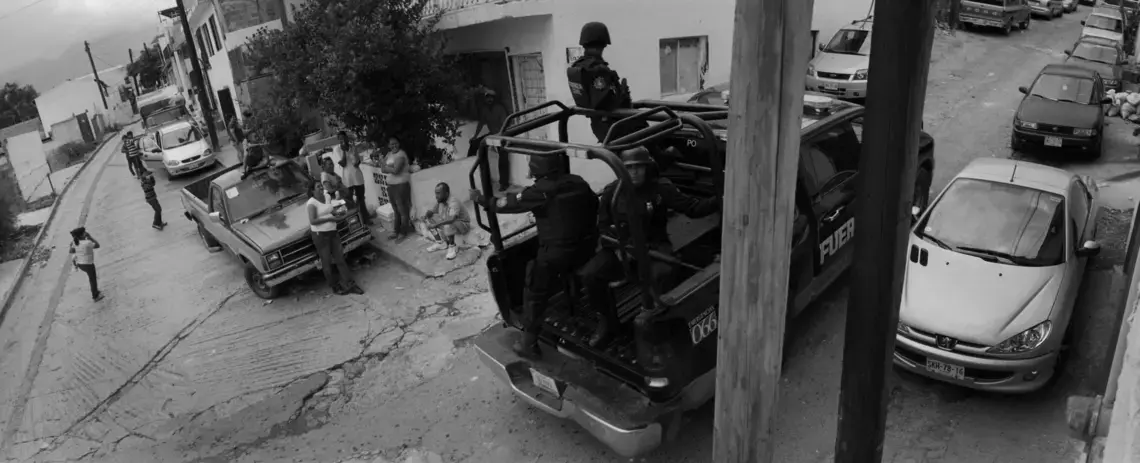The city of Monterrey located in the border state of Nuevo Leon is considered the main entry route to several major drug trafficking plazas including Nuevo Laredo and Reynosa—a forward-operating base for the Zeta drug cartel and a port of entry to their area of influence for their smuggling routes in the northeast. It also serves as a first line of defense against any incursions into their territory. Monterrey is Mexico's second richest city with much of its wealthy economy directly tied to trade on the border. However, when you drive around the city you might never know that there is any drug-related violence.
Two days before the July 1 general election a car bomb explodes in Nuevo Laredo—the third bombing there this year. The day after I arrived a small plane crashes in a nearby valley killing two men. Any accident, death or event out of the ordinary here could be related to organized crime. As it turns out, the pilot is a businessman in the area and the aircraft got caught on a power line. In this case, it is nothing more than an accident. The local police, federal police and the army are all on the scene—a clear display of unnecessary and overlapping security forces all of which operate independently of each other with no central command structure to properly coordinate them.
Later in the day I follow a small group of "Yo Soy 132" ("I am 132") demonstrators as they march through downtown Monterrey in protest against the Institutional Revolutionary Party (PRI) candidate Enrique Pena Nieto and some of the Mexican media's allegedly biased coverage of the 2012 Mexican General election.
On election day, one of the polling places located in a bus station downtown opens one-hour late. Chaos sets in as three lines form and people fight over which line is the correct one. Before the first vote is cast word comes in of an assassination north of the city past the city of Cadereyta Jiminez. I drive out to the countryside looking for the murder scene. I say I am covering the election so I can have a free pass to go into areas normally off limits to outsiders without raising the suspicions of the cartel-affiliated. As I speed up the highway I pass the arch at San Juan where 49 bodies were dumped at the side of the road in May.
I move up and down the highway until I find the scene on a rural road with dense brush on each side. I am in the middle of nowhere—overwhelmed by the loud shrill from cicadas humming to the morning's heat and humidity. The police tape keeps me and other journalists far away from the body down the road. Masked and heavily armed soldiers and federal police are close by and I am too far from the body to get good photos. There is less security here than at the plane crash. A woman in a pick-up truck slowly eases up to the roadblock. I see her face in the rearview mirror—she then reverses and leaves the scene. A man is ambushed and killed in his car. This is the route to Reynosa and several key lucrative smuggling routes and border towns.
I begin backtracking toward Monterrey through small towns with the intention of visiting polling places. One town's buildings are painted over with "CDG"--Cartel del Gulfo--graffiti. I hear of rival "ZZZ"--the Zetas cartel--graffiti also somewhere in town. I go looking for it and can't find it. I stop by the spot where 49 decapitated and dismembered bodies were dumped last May—there is still a stain on the ground from where the decaying corpses were left.
Once I get back into the city I continue to use the election to visit dangerous neighborhoods. Everywhere I go there are "halcones"--falcons--who are lookouts for the cartel-affiliated gangs in the area. I get into Colonia Independencia and visit polling stations. Most of this neighborhood is poor and understood to be controlled by affiliate gangs of the Zetas. Journalists rarely come here unless there is a murder, so everyone on the street looks surprised to see me. People at some polling stations greet me nervously and wonder what I am doing there. Eventually they accept my presence at the polling stations. The odd municipal police truck passes by patrolling the streets, but for the most part the gangs seem to have control of the area.
Click on the markers for more information.
All during election day there are a number of alarming reports, which include a ballot box being stolen by armed men and of people being intimidated not to vote by gunmen. One is of the Zetas putting a PRI party shirt on the body of a man they murdered—all stories I cannot personally verify because these areas are too dangerous to visit.
Hours later as the results start coming in from the election I go to the office of a PAN (National Action Party) mayoral candidate who was just elected as the first female mayor. Her jubilant supporters surround her—dancing and waving their hands in the air. While the votes are counted it looks like presidentail candidate Enrique Pena Nieto's PRI party is close to clinching the presidency. People say Pena Nieto will return to the ways of the old PRI party well-known for its institutionalized corruption. Many people I speak to say they well may make a deal with the drug cartels to end the violence. Everyone is waiting to see what happens.
Louie Palu is a Bernard L. Schwartz Fellow with the New America Foundation.








